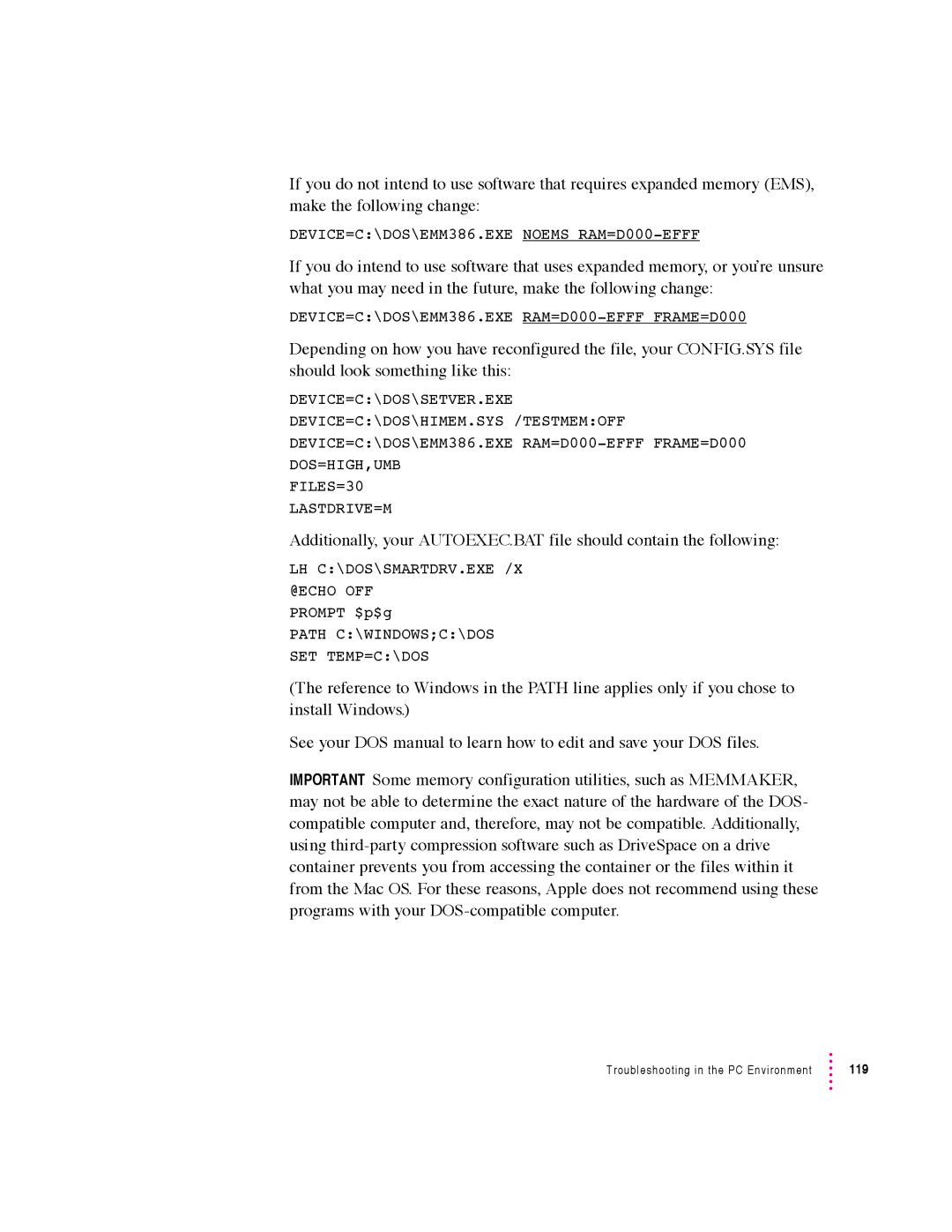If you do not intend to use software that requires expanded memory (EMS), make the following change:
DEVICE=C:\DOS\EMM386.EXE NOEMS RAM=D000-EFFF
If you do intend to use software that uses expanded memory, or you’re unsure what you may need in the future, make the following change:
DEVICE=C:\DOS\EMM386.EXE
Depending on how you have reconfigured the file, your CONFIG.SYS file should look something like this:
DEVICE=C:\DOS\SETVER.EXE DEVICE=C:\DOS\HIMEM.SYS /TESTMEM:OFF DEVICE=C:\DOS\EMM386.EXE
DOS=HIGH,UMB
FILES=30
LASTDRIVE=M
Additionally, your AUTOEXEC.BAT file should contain the following:
LH C:\DOS\SMARTDRV.EXE /X
@ECHO OFF PROMPT $p$g
PATH C:\WINDOWS;C:\DOS SET TEMP=C:\DOS
(The reference to Windows in the PATH line applies only if you chose to install Windows.)
See your DOS manual to learn how to edit and save your DOS files.
IMPORTANT Some memory configuration utilities, such as MEMMAKER, may not be able to determine the exact nature of the hardware of the DOS- compatible computer and, therefore, may not be compatible. Additionally, using
Troubleshooting in the PC Environment | 119 |
